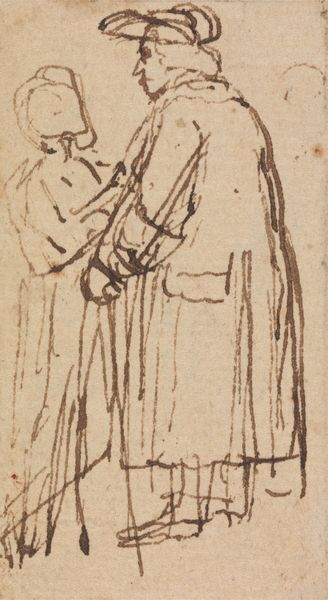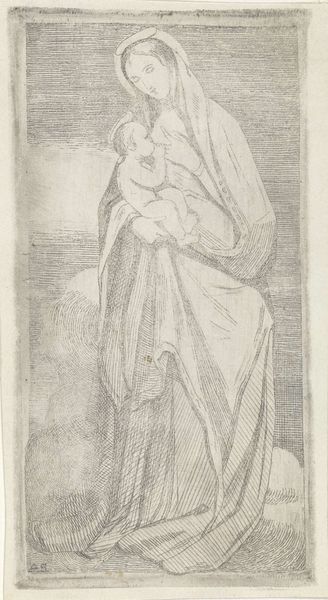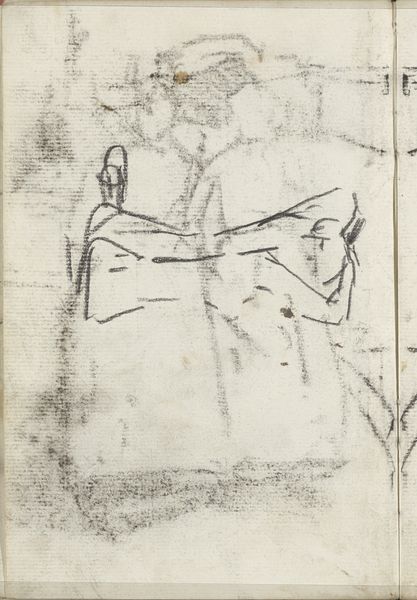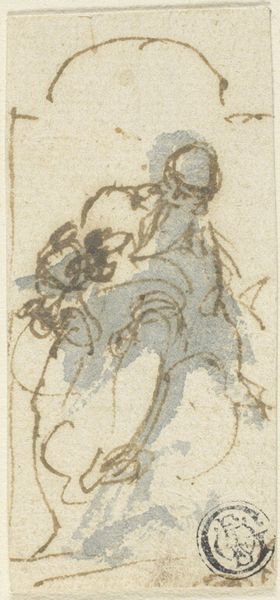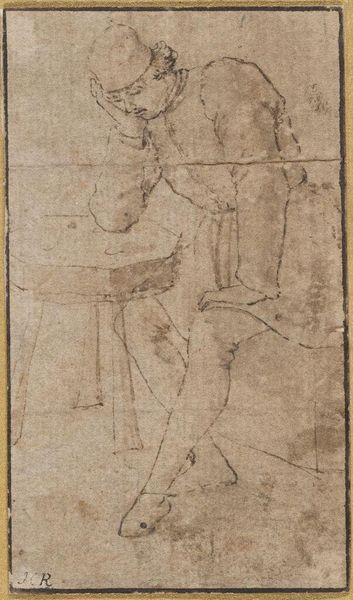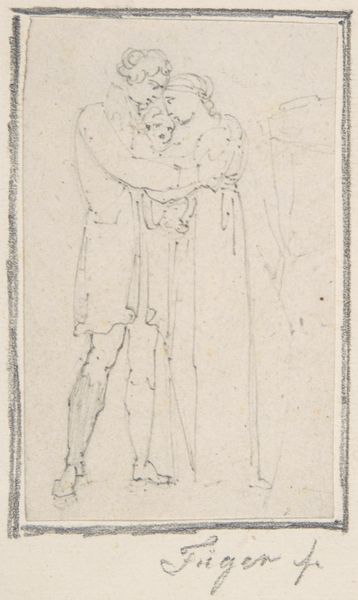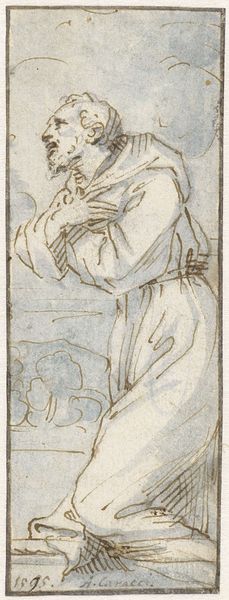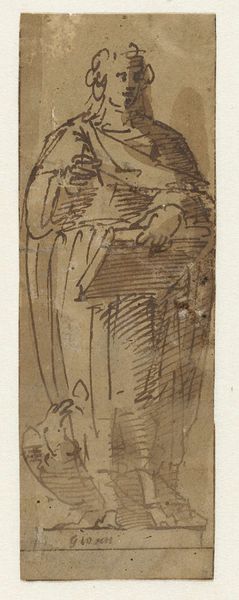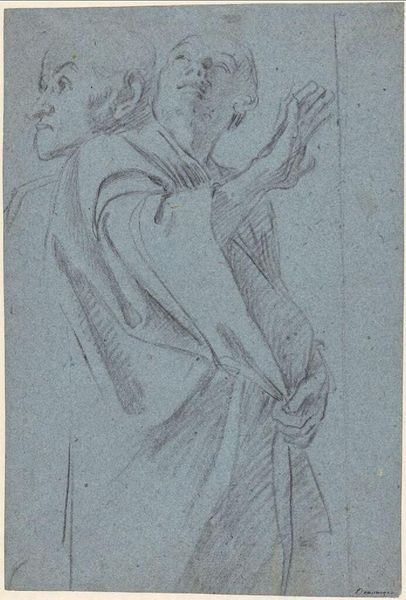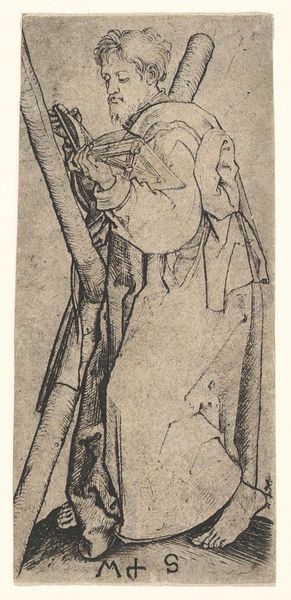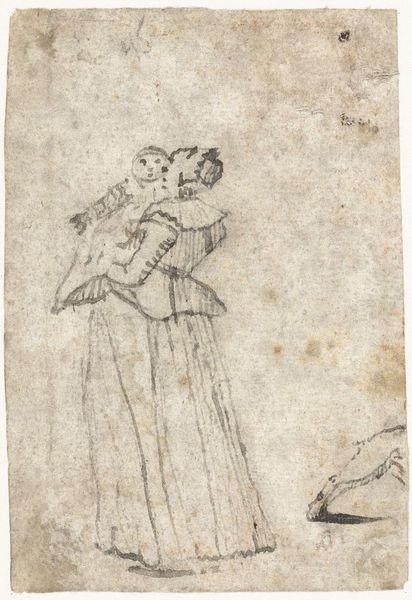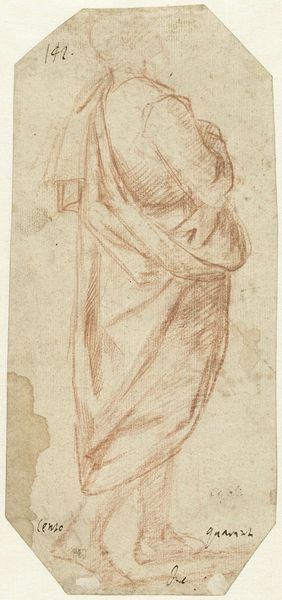
drawing, coloured-pencil, paper, pencil
#
portrait
#
drawing
#
coloured-pencil
#
figuration
#
paper
#
coloured pencil
#
pencil
#
genre-painting
#
academic-art
Dimensions: height 75 mm, width 44 mm
Copyright: Rijks Museum: Open Domain
Curator: The sheer tenderness emanating from this piece is striking; it’s so raw and beautifully simple. Editor: Indeed. What we have here is a coloured pencil and pencil drawing on paper titled "Vrouw met kind op de arm" – Woman with child in her arms. It's attributed to Simon Andreas Krausz and estimated to have been created sometime between 1770 and 1825. The image depicts a woman, presumably a mother, holding a child. It appears to be more of a sketch or preparatory drawing, focusing on capturing form and gesture. Curator: It does feel incredibly intimate, doesn’t it? It's like stumbling upon a quiet, private moment. Almost as if the artist were sitting just a few feet away. Editor: The academic style hints at a society where artistic skill was rooted in formal study. Genre paintings like these elevated scenes of everyday life to subjects worthy of artistic attention. They reveal a growing interest in the domestic sphere. It mirrors a rising middle class defining their lives through family. Curator: Funny, because to me the 'academic' aspect you mention melts away under the tenderness of the drawing. Look at the line where the baby’s cheek rests against her mother. Such a fragile caress! Editor: Absolutely. This simplicity may also indicate that it wasn’t a formal commission, and might have remained within the artist's personal collection, which would speak to a more genuine emotional exploration. Its value may have rested primarily in what it meant to him. Curator: Right. It gives a beautiful glimpse of what someone considered worth sketching for themselves and nobody else. It's less performance, more pure affection. Editor: Reflecting on this, I appreciate how the unrefined quality can almost feel like a rebellion against the highly polished portraits often displayed during this time. It is almost like a private act of affection memorialized on paper. Curator: And to come back to where we started, yes, the lasting impact of Krausz’ drawing for me comes back to tenderness. The drawing contains a truthfulness only a quickly captured, vulnerable study like this can offer.
Comments
No comments
Be the first to comment and join the conversation on the ultimate creative platform.
